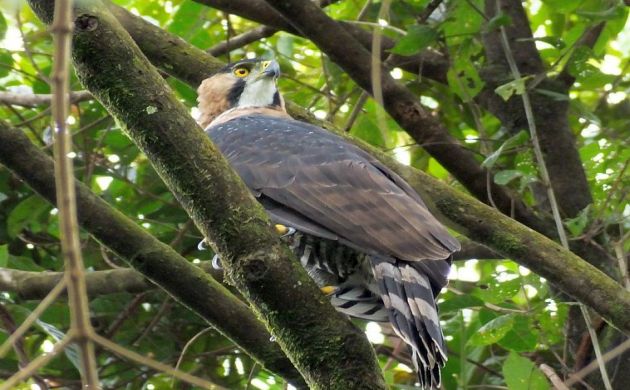
The tropical habitats of Costa Rica are home to a surprising number of raptor species. Although the country is around the same size as West Virginia, 39 species of diurnal raptors are on the list. The three huge eagles are lottery winner rare and the Orange-breasted Falcon has never been documented for the country but the rest are seen here and there on an annual basis. However, that healthy suite of hawks, kites, and forest-falcons comes with an ironic footnote. As is often the case for tropical ecosystems, there may be hundreds of species of birds at a site, but many of them are naturally rare. Their populations are often limited by inter-specific competition, scarce resources and other factors. In Costa Rica, this is the case for many raptors and is why fewer than expected are found during an average birding trip.
Of those 30 plus species, some of the raptors most coveted by visiting birders are the hawk-eagles.
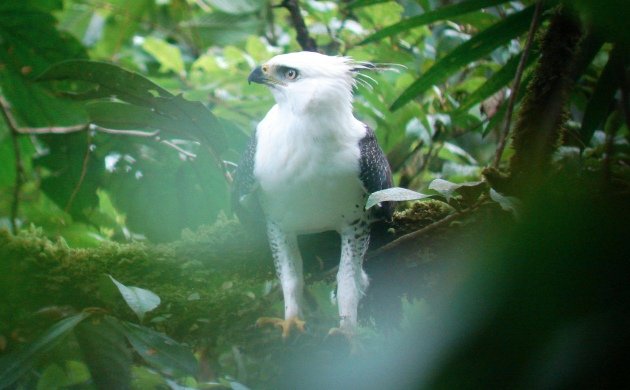
A juvenile Ornate Hawk-Eagle.
Basically, a hawk-eagle is kind of like a huge Accipiter with a crest. Just let that sink in for a moment. If a large, powerful bird of prey capable of terrorizing a Wild Turkey comes to mind, that may be a fair definition of a hawk-eagle. Like a Northern Goshawk on steroids with fancy plumage, these birds can take small monkeys, opossums, ibis, toucans, macaws, and other medium-sized animals of the rainforest. Oh, and yes, some do also kill our local “turkey”, the Great Curassow.
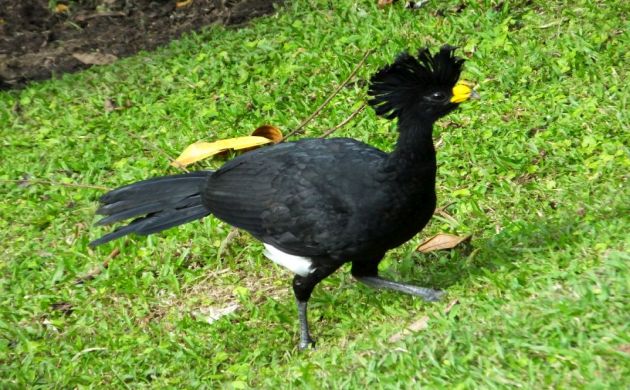
This curassow is great.
As with many areas in Latin America that boast humid tropical forest, Costa Rica has three species of hawk-eagles. Typically uncommon to rare, even when a the local guide does know where they tend to occur, these aren’t birds to be expected on every visit. However, last weekend, fortune was in our favor when we managed a hawk-eagle sweep during just four days of guiding. We were in the right places at the right times, this is how two birders from Ohio and myself saw this majestic trio of birds.
Black-and-white Hawk-Eagle
Much to my pleasant surprise, we encountered this rare raptor on our first full day in the Caribbean lowlands. After an excellent morning of toucans, puffbirds, and a hundred plus other species, we were birding a mosaic of lowland rainforest and wetlands in the early afternoon when this striking raptor species soared into view. It was using the same thermals as the vultures and gave us walk-away views in perfect light as it flew up and away over the forest. Knowing how rare and unexpected this species is, I soaked up every second of those views. A major year bird, one of my partner’s most wanted species, I hope I can go back to that site with her and refind this hunter of oropendolas, guans, and other large birds.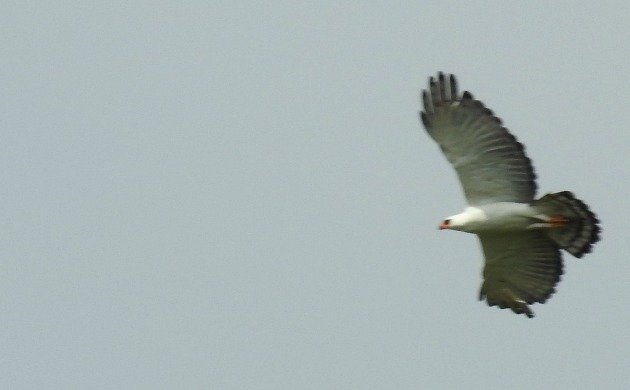
Image taken and provided by Greg Links. It’s not easy to get really good shots of a quickly moving raptor in flight.
Black Hawk-Eagle
This striking species used to be more regular in Costa Rica and was typically seen on any sunny day at the edge of rainforest. However, over the years, fewer of this species have been encountered at those same sites. Since this seems to coincide with reforestation and an increase in sightings of the more powerful Ornate Hawk-Eagle, one can’t help but wonder if it is being out-competed by its slightly heavier cousin. The bird we saw was one that was defending a territory in a few fair-sized patches of lowland rainforest.
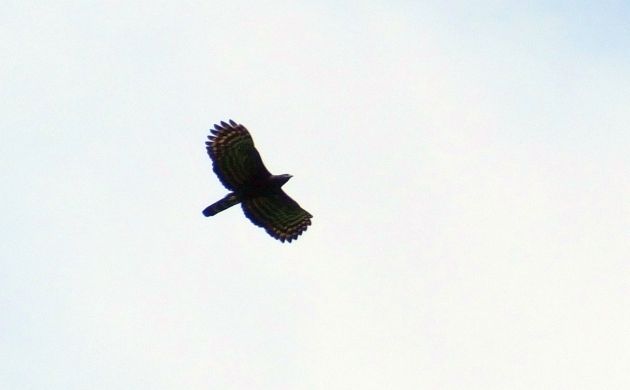
While taking a tour with local guide and artist Jose “Cope” Perez, he had barely mentioned that he had been seeing the hawk-eagle in the area when one suddenly flew into a nearby tree. After fantastic prolonged views of a perched adult, we also saw it flying above the forest, giving its whistled calls as it did so.
Ornate Hawk-Eagle
Although this fanciest and heaviest of the Neotropical hawk-eagles is rare in much of its range, in Costa Rica, it has become regular at various sites. Bird any area with a good amount of humid forest and one of these beautiful monsters might fly onto the scene. With that in mind, I had expected this species much more than the other two. It was possible in most of the areas where we had birded but it didn’t make an appearance until our final afternoon. After seeing the Black Hawk-Eagle with Cope (and other cool birds), we left the humid lowlands to make our to our hotel in the Central Valley, Villa San Ignacio.
As we drove up the highway that passes through Braulio Carrillo National Park, aware that we could still see a new bird or two, I kept my eye on the adjacent tropical forests. At one point, I noticed a possible bird at the top of a mossy snag and as we came closer I realized that yes indeed, it was definitely not just part of the tree, not just another “fake bird”. Knowing what it likely was, I told Greg to pull off the busy road and a few seconds after, we were indeed watching an adult Ornate Hawk-Eagle at close range! We visually took in our hawk-eagle sweep for a few minutes until the large raptor dropped off its perch to fly down into a wild forested valley.

Although a hawk-eagle sweep is always possible when birding Costa Rica, it’s never expected, even if one does visit the right places. We got lucky by putting in focused birding time at sites with quality habitat and saw a lot of other uncommon or rare species at the same time. I wonder what will turn up next when birding the beautiful rainforests of Costa Rica.











Ever more reasons to return to Costa Rica. Will it be this year??
I am thinking a “Beat Writers” convention in Costa Rica, hosted by 10000Birds.com would be in order!
I second that suggestion!